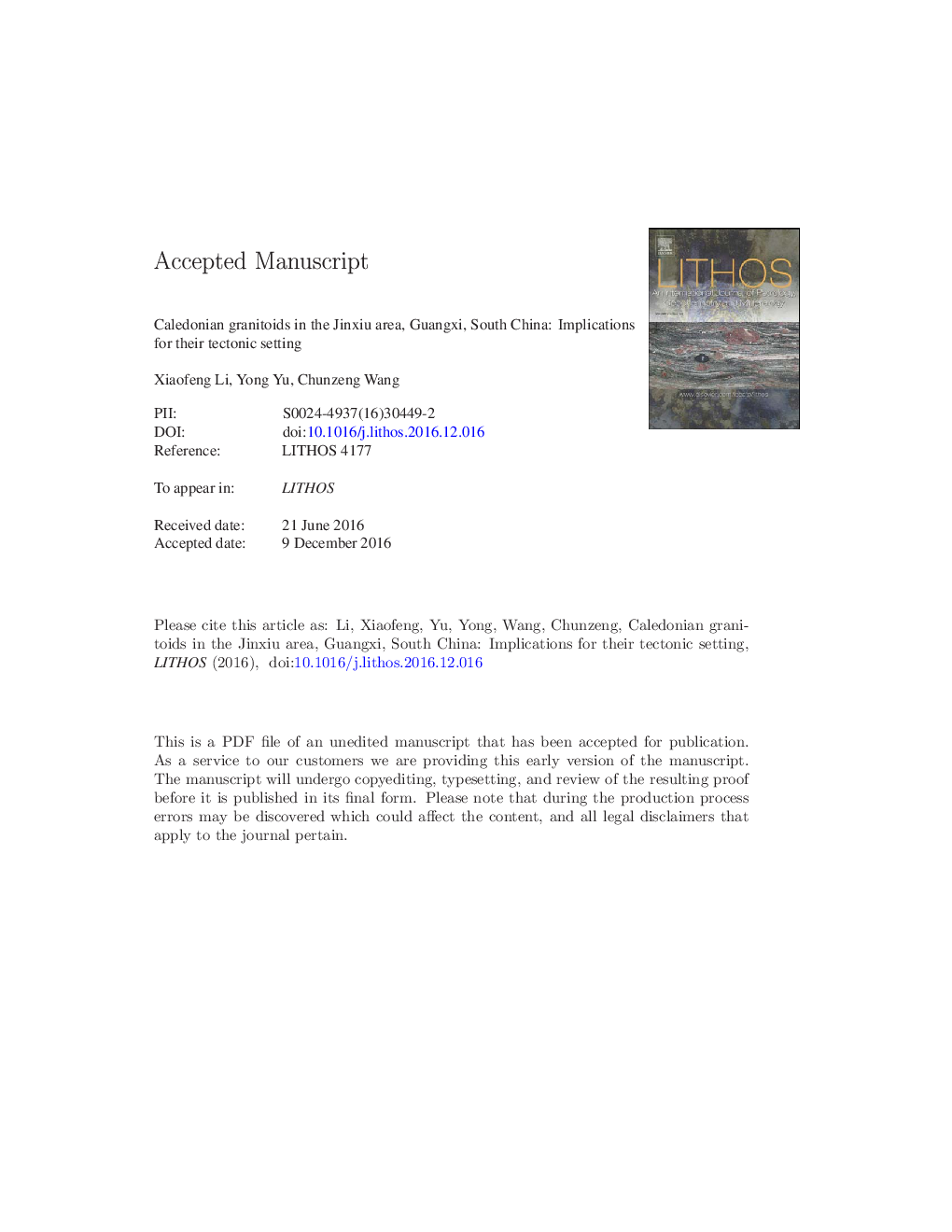| Article ID | Journal | Published Year | Pages | File Type |
|---|---|---|---|---|
| 5784205 | Lithos | 2017 | 39 Pages |
Abstract
Jinxiu area is tectonically located between the Cathaysia and Yangtze blocks of South China. The area has three granitic plutons, Dajin, Boquan, and Lingzu plutons. Geochemically the plutons are high-K calc-alkaline, depleted in Ba, Sr, P, and Ti and rich in Pb, with decoupled Nb and Ta, and show non-island-arc magmatic affinity. Biotite monzogranite samples collected from the Dajin, Boquan, and Lingzu plutons yield zircon SHRIMP 206Pb/238U ages of 419.0 ± 5.0 Ma, 436.0 ± 4.0 Ma, and 446.1 ± 8.2 Ma, respectively, indicating that the plutons were emplaced during the Late Ordovician to Late Silurian of the Caledonian time. The granodiorite within the Lingzu biotite monzogranite pluton yields a zircon 206Pb/238U age of 174.5 ± 1.9 Ma, indicating a superimposed Late Jurassic magmatic event. The monzogranites and their enclaves show εNd(t) values of â 14.7 to â 11.1 and â 8.0 respectively and TDM2 values of 2.1-2.4 Ga and 1.8 Ga, respectively, demonstrating that the magmas were derived from re-melted Paleoproterozoic continental crust. Based on geochronology and geochemistry of the granitic plutons, as well as regional stratigraphy and paleontology, it is concluded that any existence of oceanic crust and oceanic subduction was unlikely in the Jinxiu area and vicinity during the Paleozoic Caledonian Ordovician-Silurian time.
Related Topics
Physical Sciences and Engineering
Earth and Planetary Sciences
Geochemistry and Petrology
Authors
Xiaofeng Li, Yong Yu, Chunzeng Wang,
